Consumed by Beauty – The World of Carnivorous Plants
Dream Eater
...You dream that you are deep in a jungle....
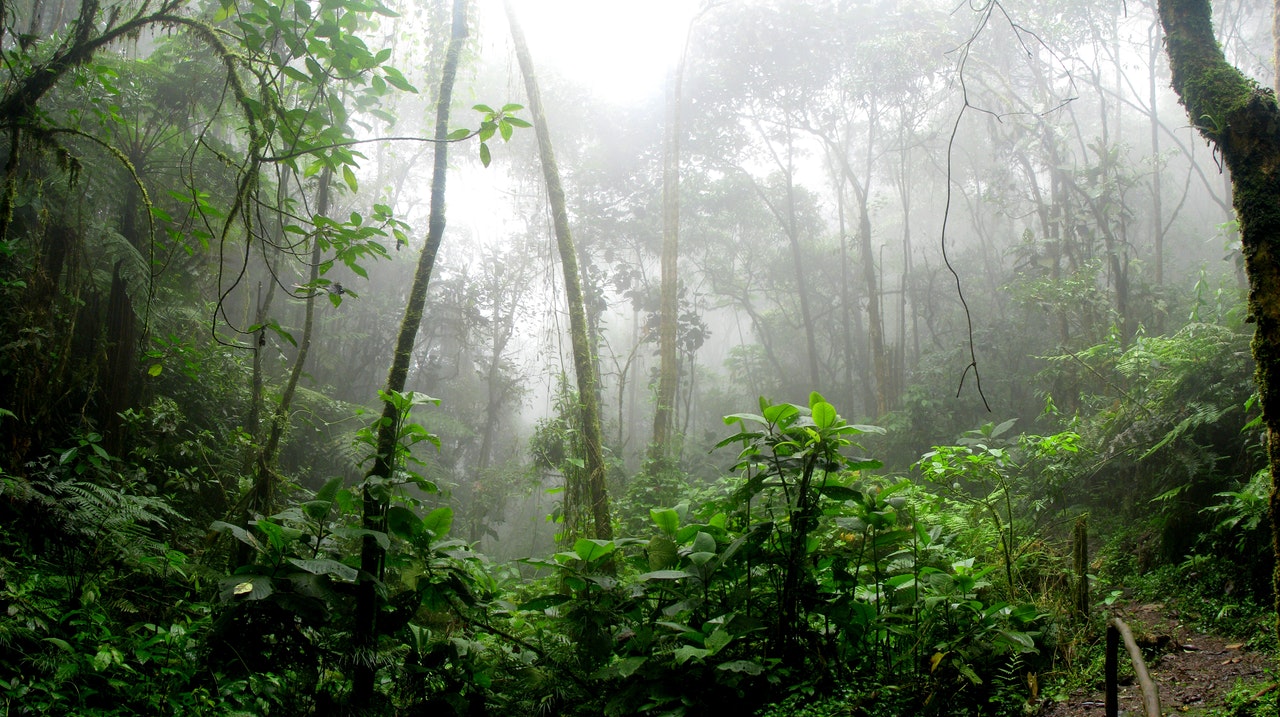
Image - Pexals -David Riaño Cortés
... A savage predator chases you, and it is gaining. Tired and out of breath, you climb a nearby tree. The beast below you howls in frustration and walks away. Finally you are safe, you can rest, or so you think.
You notice the tree sprouts a large flower, large enough to lay yourself down in and slumber. Your eyes close and you drift away.
Sometime later you are awakened by a burning sensation on your skin. You try to sit up but you can’t, you are enclosed in a cocoon. The sides of your enclosure feel slimy. And the bottom is filled with a putrid liquid.
You grab your arm to see why it hurts so much, and a piece of your own flesh comes off in your hand.
You scream in impotent horror, as you suddenly realize the truth - you are being eaten alive, bathed in the stench of your own rotting flesh, consumed by digestive juices. You traded the terror of a quick death by a predator’s claws, for the horror of a slow, excruciating liquefaction.
To add insult to injury, you are a Vegan being eaten by a plant. The irony is not lost on you.
You wake up with a start – relieved that it was just a bad dream, and that liquid on your skin is sweat, not the digestive acids of some malicious flower. You eye the potted plant in the corner with some suspicion.
Could it Be?
The above may seem like the plot of a 1950’s B-Grade horror movie. A prehistoric fantasy. But you might be surprised.
A Wild Story - German explorer Carl Liche reported in 1878 about a terrifying ceremony he witnessed in Madagascar–
“The atrocious cannibal tree, that had been so inert and dead, came to sudden savage life. The slender delicate palpi, with the fury of starved serpents, quivered a moment over her head, then as if instinct with demoniac intelligence fastened upon her in sudden coils round and round her neck and arms; then while her awful screams and yet more awful laughter rose wildly to be instantly strangled down again into a gurgling moan, the tendrils one after another, like great green serpents, with brutal energy and infernal rapidity, rose, retracted themselves, and wrapped her about in fold after fold, ever tightening with cruel swiftness and savage tenacity of anacondas fastening upon their prey.” Source
The whole story was later shown to be a fabrication, either to sell newspapers or spur on more exploration. Or maybe it was an early news-troll.
Ancestral Memories?
But the story above hints that perhaps, somewhere in the depths of our human collective unconsciousness, we have an ancestral (archetypal) memory of such things, now revealed in our dreams and fantasies. The great doctor and psychologist Carl Jung believed that:
"…the whole of mythology could be taken as a sort of projection of the collective unconscious". Wikipedia
Could giant man-eating plants have ever existed? There is really no way to know, as no fossils yet found prove that. However, as recently as the last ice age, 13,000 to 8,000 years ago, giant animals roamed the earth. Mammoths, Saber Tooth tigers, giant bears and rats and sloths. Wikipedia
Not to mention the extinction of the ever-popular dinosaur. So, it is possible, in theory, that such giant flesh-eating plants once existed. But plant fossil evidence gets preserved less commonly.
On a lighter note the 1986 comedy film, Little Shop of Horrors, featured a blood-sucking plant.
And Now, Back to Reality
Today on Earth there exist plants that do, indeed, eat insects and small animals like frogs, lizards, mice and rats. And one man demonstrated that they have a taste for human flesh. Popular Science
Some aquatic species like Utricularia and Aldrovanda, even eat small fish. Source
Carnivorous Plants are:
“…plants that derive some or most of their nutrients (but not energy) from trapping and consuming animals or protozoans, typically insects and other arthropods. Carnivorous plants have adapted to grow in places where the soil is thin or poor in nutrients, especially nitrogen, such as acidic bogs. Charles Darwin wrote Insectivorous Plants, the first well-known treatise on carnivorous plants, in 1875.” Wikipedia. Carnivorous plants are synonymous with Insectivorous Plants.
These plants are believed to have emerged after insects were on the Earth, some 60 to 125 million years ago source
There up to 750 Species ranging over every continent except Antarctica. They tend to grow naturally in nutrient-deficient soils and areas, thus the adaptation to getting nutrition from other sources. They often grow in bog, marsh and swamp areas, where the soils are poor in nitrogen, phosphorus, and sulfur, nutrients essential to them. By consuming various insects and small creatures, they obtain essential nutrition.
Because of their unique evolution and adaptation, carnivorous plants play a role in organic matter recycling, important for any ecosystem
They are the result of natural adaptation to the environment, not a plant gone rogue. Because they do grow in nutrient-poor soils, the fact that they can exist there tends to enrich the area over time, via their decayed biomass. So in effect, they are agents of ecological enrichment. Source
So How do These Plants Catch Prey?
The five basic mechanisms by which these plants catch prey are –
1 - The Pitfall – the prey slips or falls into a container receptacle of digestive fluid. Imagine water-sliding into digestive acids.
One example of a plant using the pitfall trap is Sarracenia purpurea, commonly known as the purple pitcher plant. It ranges widely in North America, from the gulf states and eastern seaboard, through the Great Lakes area, to the pacific west coasts of the U.S. and Canada.
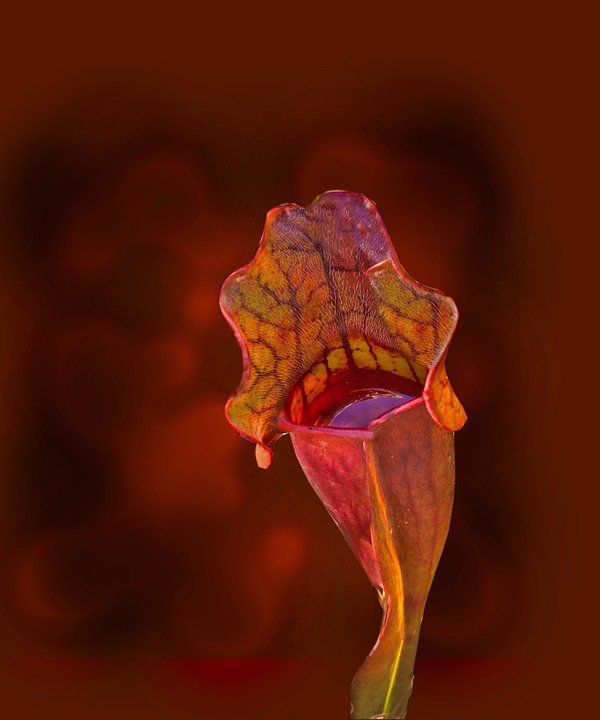
Image Pixabay - cindywill
Below is a an example of a Nepenthe, or tropical pitcher plant. They commonly range through tropical Asian areas, parts of Australia, and as far west as Madagascar.
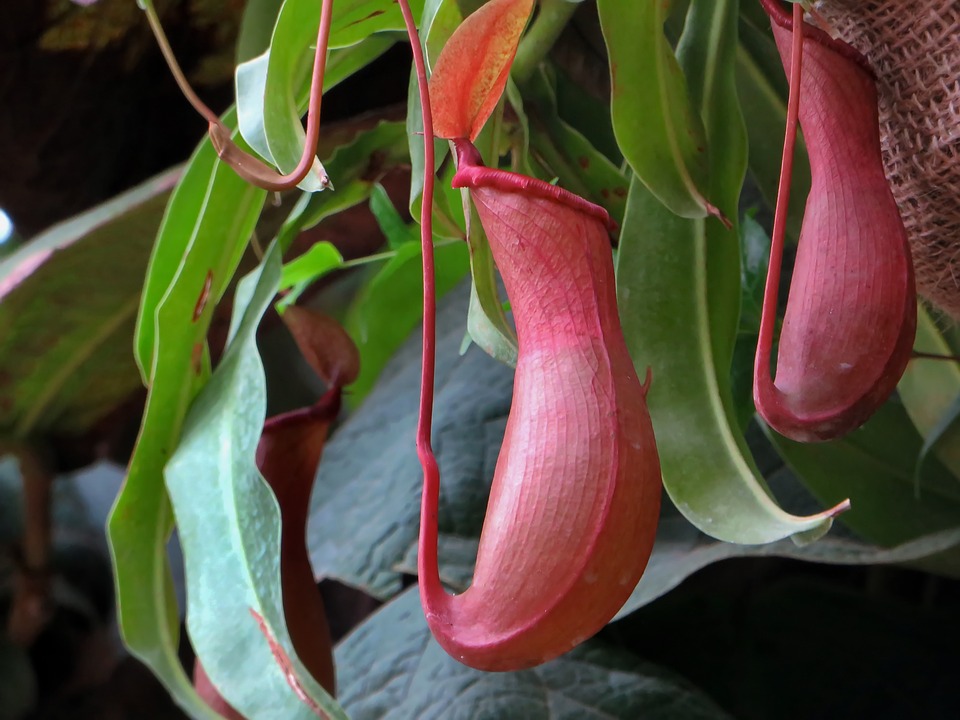
Image - Nepenthe Epiphyte Carnivorous Plant - Pixabay - DEZALB
2 - The Sticky “Flypaper” – wherein the prey gets stuck on sticky droplets on leaf blades that resemble water. Below is an example of a Drosera rotundifolia. Drosera plnats are also commonly known as 'Sundew' plants. Depending on the particular subspecies, they range over every continent except Antarctica.
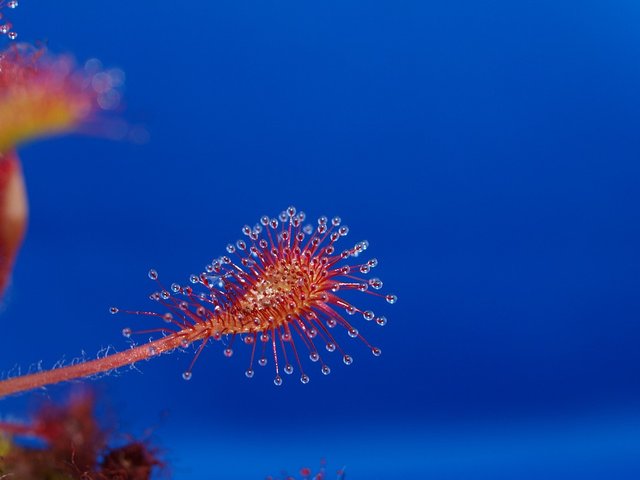
Image - Drosera rotundifolia - Pixabay - andyboehnke
3 - The Bladder Trap – these plants have a flap and create a pressure differential between the plant and the external environment. When stimulated, the flap opens and sucks in the unfortunate victim. They are known as Utricularia, commonly and collectively called the bladderworts. They can be found in fresh-water areas, and can live as either land or aquatic plants. They range world-wide, excepting Antarctica.
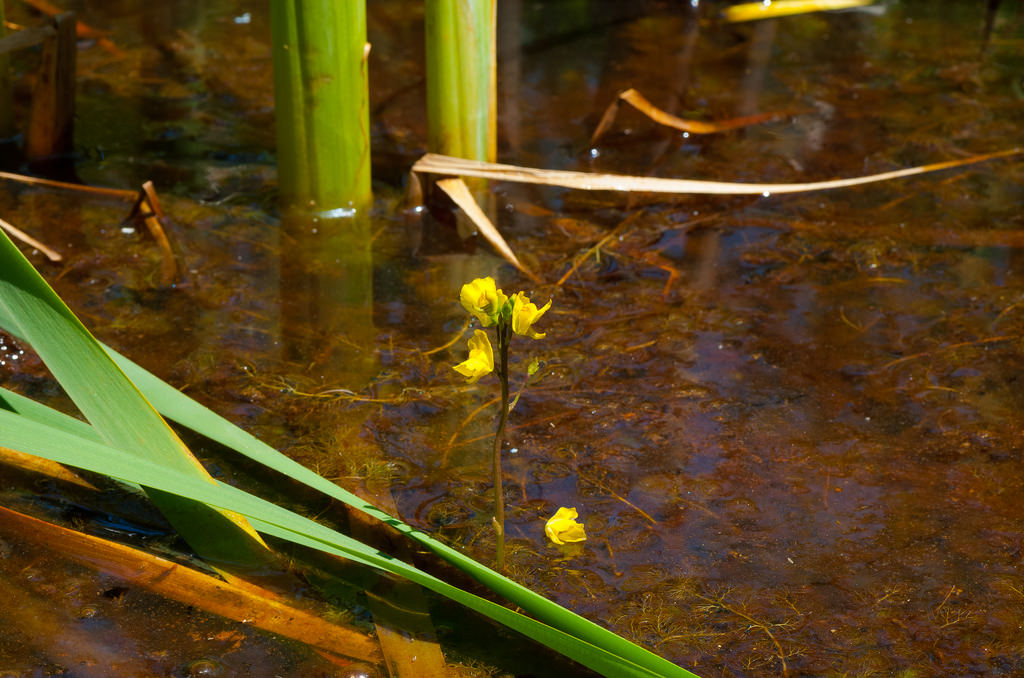
Image - Common Bladderwort (Utricularia vulgaris) - Flickr - Labeled for reuse - wackybadger
4 - The Corkscrew Trap – these plants have a corkscrew-like tunnel with inward growing filaments. The insect can get in, but not out. They are members of the plant Genus Genlisea They are part of the Bladderwort Family, and range throughout Africa, and Central and South America. Their corkscrew structures usually grow below the surface, so are hidden for the most part.
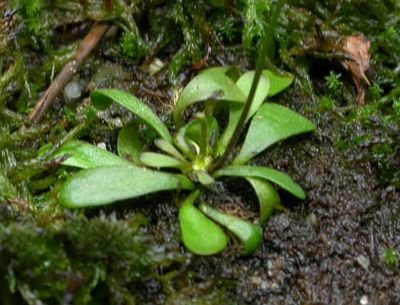
Image - Genlisea hispidula - Wikimedia Commons for Reuse
5 - The Snap Trap – this trapping mechanism resembles a small bear-trap. Follicles are stimulated, then the trap snaps shut, trapping the organism. Escape is prevented by tough thorns that act as jail cell bars. Digestion begins.
Below is a Venus Flytrap, or Dionaea muscipula It is native to a relatively small area of coastal bogs in North and South Carolina, in the U.S.
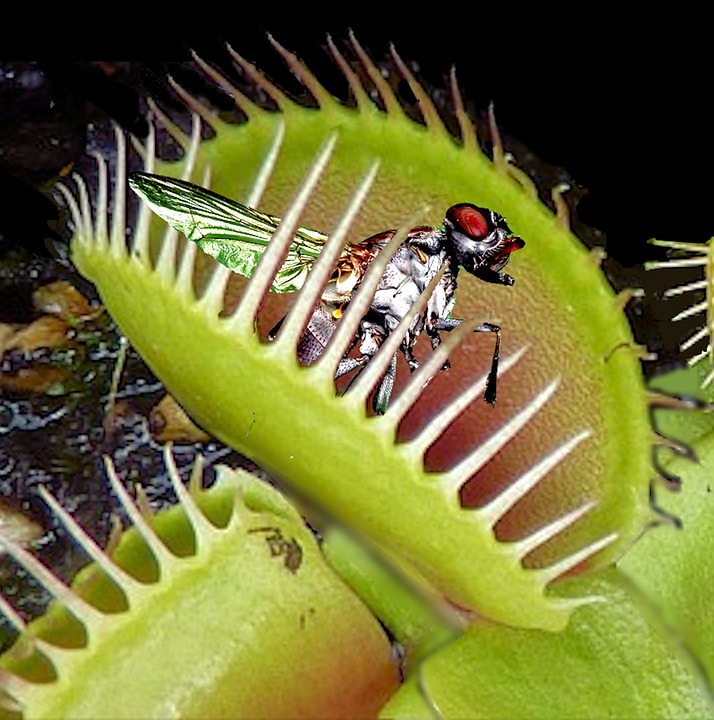
Image Pixabay - dugeot
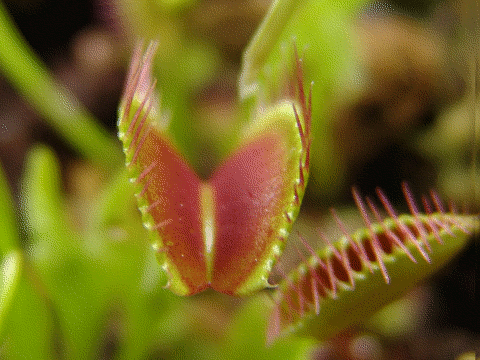
Image - Venus Flytrap - By Mnolf - Own work, CC BY-SA 3.0, Wikimedia
For more details about trap mechanisms, see The Conversation, the source for the above trap mechanism list.
Fascinating Video
To see a variety of these plants in time-lapse action, here is an amazing, short National Geographic clip by Filmmaker Chris Field Bio
Video Source National Geographic YouTube
It's always enlightening for me to learn how various living things on this planet adapt to their environments, and evolve to meet challenges. Carnivorous plants are one such incredible example, evolving to eat organisms to meet their nutritional needs in nutrient-poor areas. And by doing this, they slowly enrich their environments via the organic cycle.
To See More of My Posts, Please Visit My Profile Page

Really rare lately to find such a good posts, keep bringing the same value to Steemit, followed!
Thank you @edgarsart - and thank you for reaching out to me on Steemchat! Very kind comment from you, it means a lot, cheers!
I was interested in dreaming with you that I am in the jungle. This is an fascinating article about plants.
Yes we can share the dream, why not? ; )
Thank you for the kind comment!
Congratulations! This post has been upvoted from the communal account, @minnowsupport, by mmo-mmo from the Minnow Support Project. It's a witness project run by aggroed, ausbitbank, teamsteem, theprophet0, someguy123, neoxian, followbtcnews, and netuoso. The goal is to help Steemit grow by supporting Minnows. Please find us at the Peace, Abundance, and Liberty Network (PALnet) Discord Channel. It's a completely public and open space to all members of the Steemit community who voluntarily choose to be there.
If you would like to delegate to the Minnow Support Project you can do so by clicking on the following links: 50SP, 100SP, 250SP, 500SP, 1000SP, 5000SP.
Be sure to leave at least 50SP undelegated on your account.